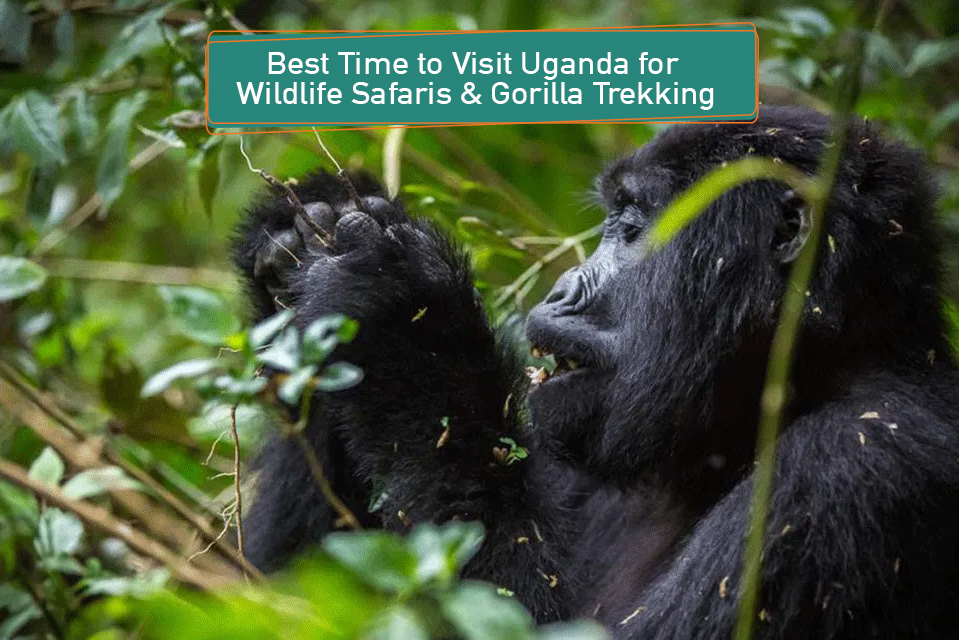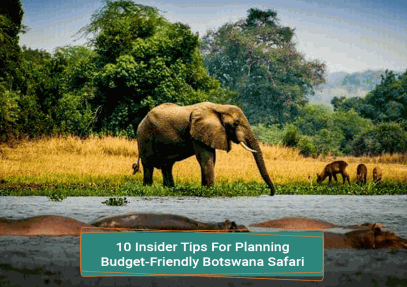
From gorilla tracking in Uganda and the wildebeest migration in Kenya and Tanzania to Mozambique’s palm-tree dotted coastline, Namibia’s stark desert landscape and Botswana’s remarkable Okavango Delta, Africa’s incredible biodiversity puts it on the top of the world’s iconic safari destination list. With more than 200 national parks and game reserves, Africa is a wildlife paradise, known for its abundant animals and birds, including the renowned ‘big five’.
A typical day on an African safari usually consists of game viewing in scenic surroundings, in the company of knowledgeable guides and with delicious local meals served upon your return to the camp or lodge. Of course there are different ‘typical days’ depending where you’re on safari. Many safari destinations also offer indoor and outdoor amenities to enjoy when not out on game viewing activities, such as comfortable lounge areas, cosy reading nooks, swimming pools, decks overlooking waterholes, and, in a few places, spa treatments.
To give you an idea of what to expect when on safaris, we have summarised how a typical day on an African safari might play out.
Early Morning: Before 8 am
Prepare to wake up early. On safaris, the mornings start at around 6 am during the summer months (later in the winter). Early mornings offer the best light to view the beauty of the African bush, its diverse wildlife and stunning landscapes. The scenic delights often start with an astonishing sunrise view as you start your day with coffee or tea, a light breakfast, then head over to your game vehicle for the morning game drive. The wildlife wakes up early, hunting for food. The herbivores graze while the cats are ready to pounce on their unsuspecting prey.
Early morning game drives usually last for 2 to 3 hours, often with a stop along the way for a hot drink; a good chance to stretch your legs and take in the view. Then you head home as the day gets hotter, ready for a hearty brunch and some time to relax.
Mid Morning: 8 am to 11 am
Sometimes your stay will include mid-morning game drives that start from 8 to 9 am onwards, which means you have a good breakfast first, while others set off for a full day out and about, with a packed lunch to enjoy later. For example, when gorilla tracking in Bwindi Impenetrable National Park in Uganda, expect to be out trekking for most of the day. Visitors who decide to forgo the morning game drive can participate in other activities which may be on offer. Take, for example, Ethiopia’s Bale Mountain National Park, additional activities include birding, fishing, honey-harvesting, and trekking.
Early Afternoon: 1 pm to 3 pm
After returning from the game drive, you’ll have plenty of time to relax. Keep in mind that the African afternoons are the hottest so when you return to the camp, enjoy the chance to shower, taste the delicacies prepared by the chef, read, and take a nap before starting the late afternoon leg of your safari.
In Ngorongoro Conservation Area, visitors may have the opportunity to experience bush life when they stay at public campsites such as Simba. The camp’s location near the Ngorongoro Crater ensures that the wildlife, such as zebra, stop by for a friendly visit. In contrast, Serengeti’s Four Season Safari Lodge offers a luxury retreat after hours spent on a game drive. You can book the suite overlooking the waterhole to watch the wildlife quench their thirst as you relax on the private deck or float in the infinity pool. Or you can spend time in the interactive discovery room, learning about Serengeti, its culture, history, and people.
Late Afternoon: 4 pm to 5 pm
After getting some rest, you can enjoy some snacks and tea before setting out again. By 3-4 pm, the heat subsides as the temperature cools, giving you another chance to see Africa’s spectacular wildlife on an afternoon game drive. Keep your eyes peeled for wildlife, both the plentiful animals often seen browsing nearby, and the rarer animals which take more patience and effort to see. For example, on a three-hour afternoon game drive in Zambia’s Mosi-Oa-Tunya National Park you might be lucky to see one of Africa’s rarest big five species – the white rhinoceros.
Experienced guides know the perfect spots for wildlife viewing. They also remain in contact with fellow guides, who constantly share the location of wildlife sightings, offering you a great safari experience and often the chance to see a wide variety of wildlife. The wildlife awake from their afternoon slumber, leave their sequestered corners and are getting back to their day scouring the park, making them easier to spot from your vehicles.
Evening: 5 pm to 7 pm
Sometimes late afternoon game drives stretch into the evening, with the sun about to set, painting a beautiful picture in the sky. A memorable safari experience is stopping for scenic sundowners: enjoying a drink and snacks as the sun sets, the bush coming alive with nocturnal sounds and activity before heading back to your accommodation for a hearty meal cooked by the resident chef when you return.
Late Evening: After 7 pm
Upon your return to the camp, you can enjoy the feast created by the chef. Luxury accommodations such as Vrede & Lust have their own signature wine collection. After a day full of activity, you can relax and enjoy the culinary delights, surrounded by modern luxuries in the heart of the African wilderness. Despite having a full day, you might want to chat to other safari goers around the campfire after dinner, enjoying a nightcap and swapping safari stories and adventures before heading off for a well-deserved night’s rest. For a unique sleeping experience, some safari accommodations offer the option of sleeping under the stars in open-air rooms/beds with a view of the twinkling starry sky above you.
Leave a Reply
Your email address will not be published. Required fields are marked *













No Comments